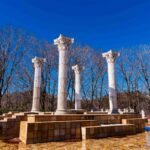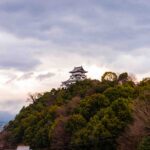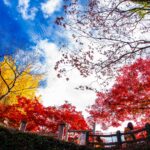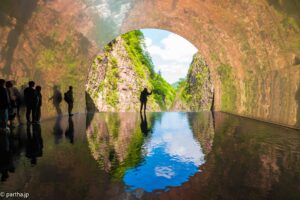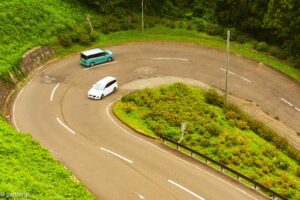
Fukushima prefecture became known worldwide in 2011 after the Great East Japan Earthquake, the subsequent Tsunami and the Nuclear Power meltdown.
The uncomfortable proximity to Tokyo and the subsequent spread of radiation contamination and the resulting panic are still fresh in the minds of Tokyo residents like me who lived through that period.
There has been a concerted effort towards rehabilitating the image of this beautiful part of the Honshu island has been met with mixed success. The government has promoted the locally grown produce successfully however the seafood exports have run into opposition with boycotts from China. September 2024 saw a thaw in the frostiness and imports from Japan have gradually resumed.
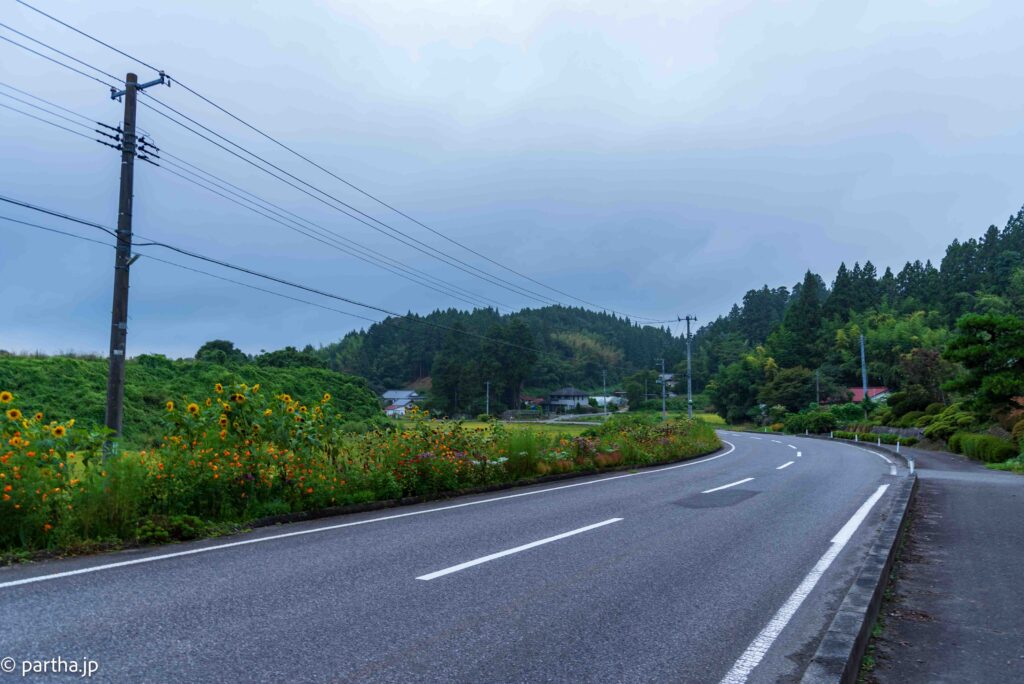
I visited Fukushima prefecture in October 2023, on the day Israel suffered the horrific attacks on its soil. The memories of that beautiful early autumn outing are mixed with gut wrenching details coming out of Israel and the fears, subsequently realised, of an all out war in the middle east.
The war still rages on a year later and I was back in Fukushima prefecture once again, this time in September, the summer still lingering. The autumn foliage had not yet revealed itself, the land was still green and wet from the late summer rains.
We chose a farmhouse in Tamura town as our base, located on the Abukuma plateau with winding mountain roads and a noticeable lack of people. The tourism website for Tamura city describes the place as having a ‘breath of the earth’ that is not available in our daily busy lives. The website also describes Tamura city and its surroundings as places for ‘Experiential Tourism’ with a constantly changing landscape, the passing of the seasons and the inherent beauty that accompanies each turn.
We reached the farmhouse early in the afternoon, the traffic from Tokyo light despite a long weekend. The Tohoku Expressway was free of accidents unlike our trip a year earlier and after a few wrong turns we found our farmhouse.
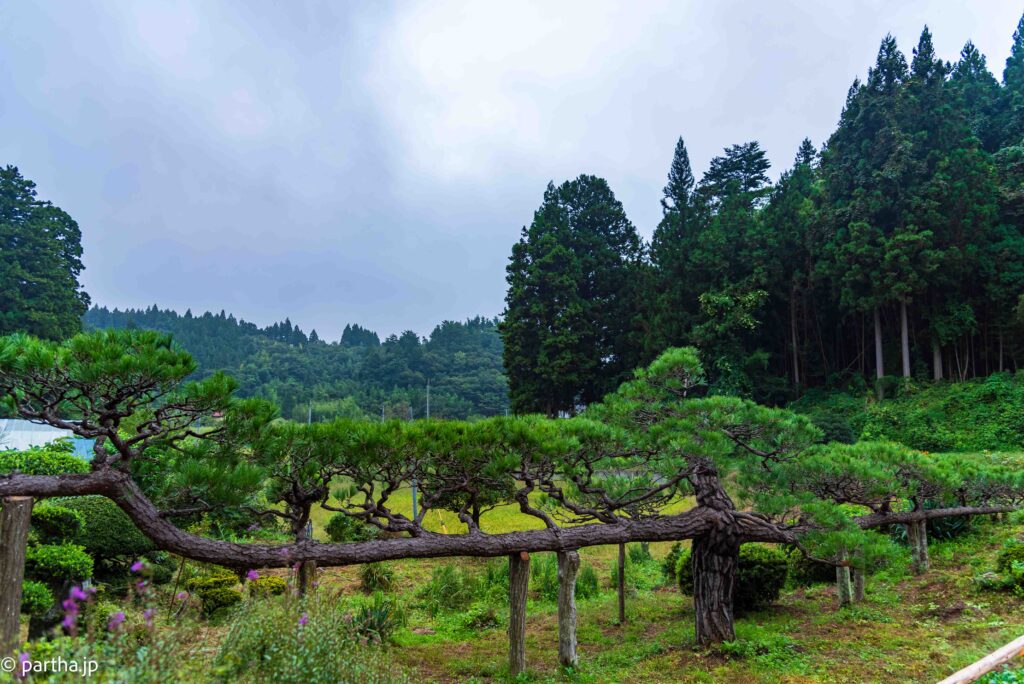
Our host was an actual farmer, returning to his hometown after a long stint overseas, continuing the family tradition of farming not only his own farm but taking over the day to day running of a few nearby farms too.
A depopulated Fukushima prefecture, with a dwindling population, younger people moving out and the ageing remnant population struggling to run the farms needs such initiatives.
Our first evening was spent walking around the farm, the prefectural road(No13), walking along the slumbering fields at dusk, lush green from the late summer rains an occasional passing vehicle breaking the cacophony of insects. We passed what looked like mailboxes but were actually places for storing salt meant for salting roads in winter.
There were a few shrines along the path, the Aneya Shinto shrine and the Yudonosan shrine. The shrines are maintained by the families on whose lands they are located on, the Aneya Shinto Shrine was on the land of our host and maintained by his family. The Yudonosan shrine was located on a service road, a rusty staircase with overgrown foliage creating a natural impediments, desolate and visibly abandoned.
Darkness was falling and we walked back to our farm, the host was preparing a barbecue for a motorcycle group that was expected to arrive soon. The grill was fired up, the meat and vegetables placed in containers , a small fire lit near the benches where the party would sit.The air was chilly and crisp and we settled down for the night.
The motorcycle group arrived later in the night and left early in the morning, we heard the sounds of their feet trudging softly up the stairs, we heard them the next morning on the way down and before we could catch a glimpse they were gone.
Abukuma Caves あぶくま洞
The caves were located around 20 kilometres away from our accommodation, the winding mountain roads making it a 20 minute drive. We left early on that Sunday morning, the roads almost deserted on that holiday morning and reached the parking area near the cave entrance.
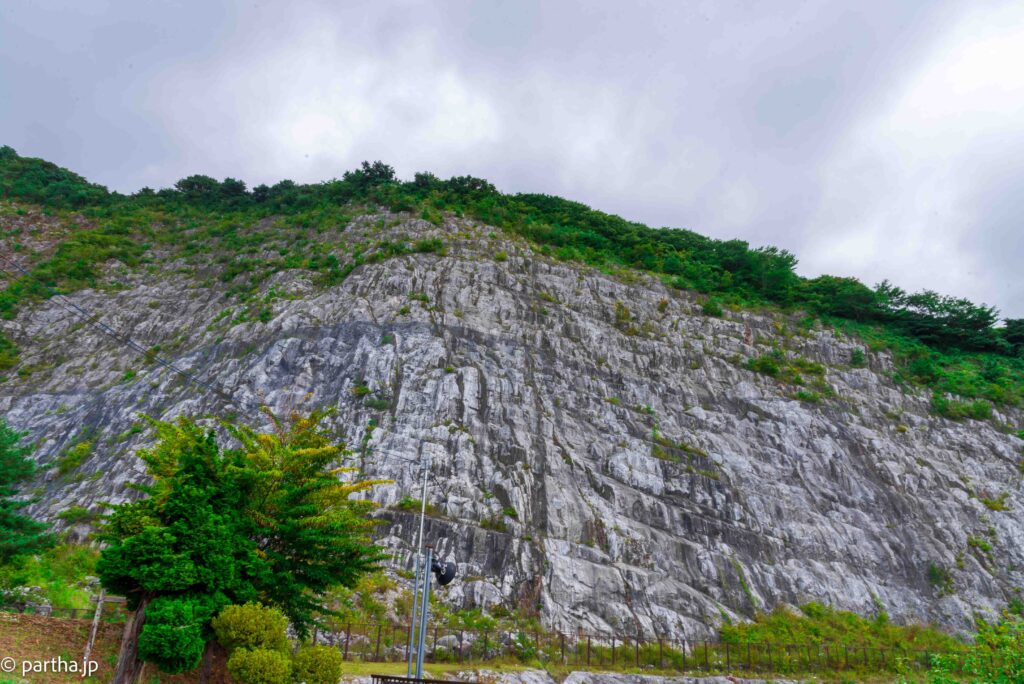
The caves were discovered by accidentally by workers at a nearby mine and were measured to stretch across 4,218 metres with another 3,618 metres that have not been opened to the public.
The caves contain a wide variety of stalactites, which are mineral formations that hang from cave ceilings and are shaped like icicles. These stalactites are formed from the limestone deposits , the patterns created by the erosion of the dripping groundwater. It takes around 70-100 years for the stalactites to grow 1 cm, so it has taken 80 million years to create the formations.
The tickets cost 1200 Yen per person and there are 2 options on the exploration courses inside the caves. Walking inside the caves involves ascending and descending steps at different parts of the cave. The standard course is easy, the discovery course involves crouching over long distances. There is a fork on the regular course where the visitor needs to show the tickets charged at an incremental 300 yen to access the exploration course.
The first sight for the visitor is the the ‘Senshin no Ike’ (先心の池) a clear spring with ice cold water. The stalactites have been named after the patterns they resemble and the visitor will view patterns called ‘Grotto of the Youth’ , ‘White Porcelain Falls’, ‘Crystal Curtains’, ‘Mushroom Rock’ etc.
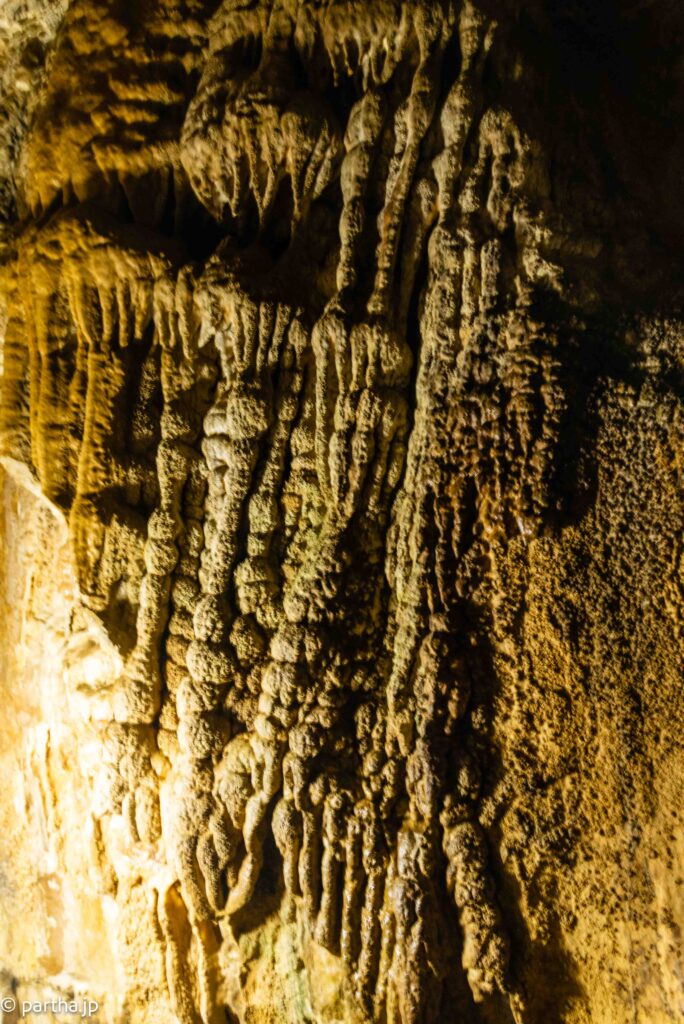
Hard hats are not provided and there is a good chance that the visitors will bang their heads on the low ceiling at some point of the course. Lights are installed at locations painting the stalactites in hues of colours with dramatic effect. The entire cave exploration lasts around 40 minutes, visitors were building up and we had to wait at parts of the course to let the people move.
The course is not difficult but the groundwater seepage makes parts of the course slippery so proper hiking shoes are recommended. The effort level is low to medium and anyone with a reasonable level of fitness should be able to traverse the caves without much difficulty.
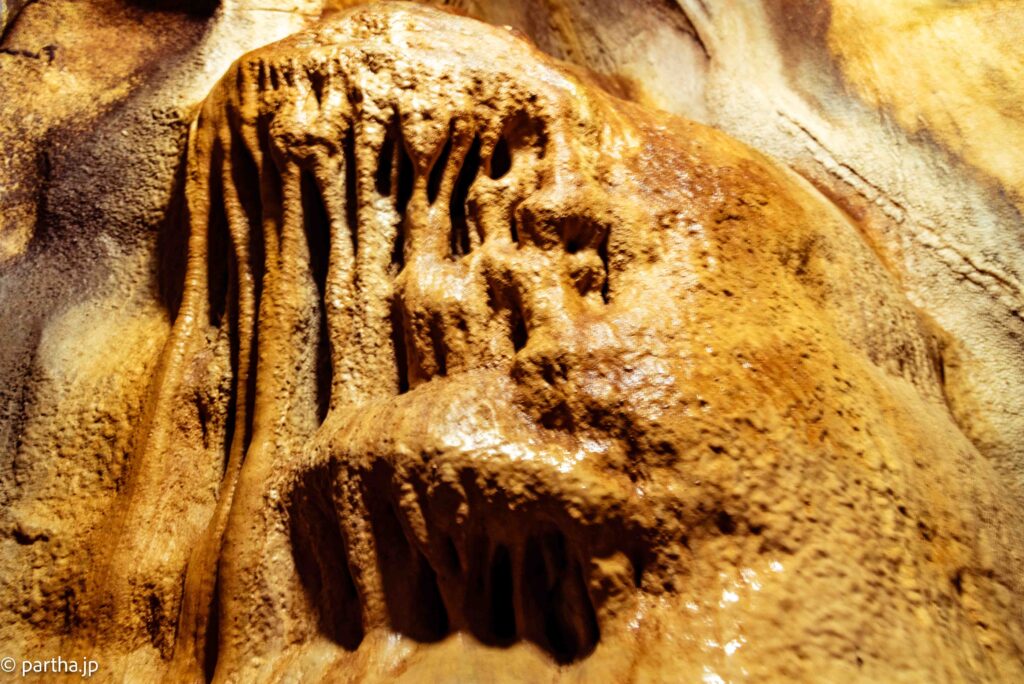
The Hoshinomura Observatory is located next to the cave complex and as we exited the caves we crossed a narrow bridge to get to the observatory. The observatory is a 3 storey facility stretching over 16 metres on the mountain top. The facility has a planetarium that runs shows explaining the star charts.
The observatory was not of much interest to us and we made our way back to the bridge to parking area next to the caves. The staff at the observatory locked the gates connecting the bridge for reasons that were not clear to us and walked away leaving us to take a longer circular route back to the parking.
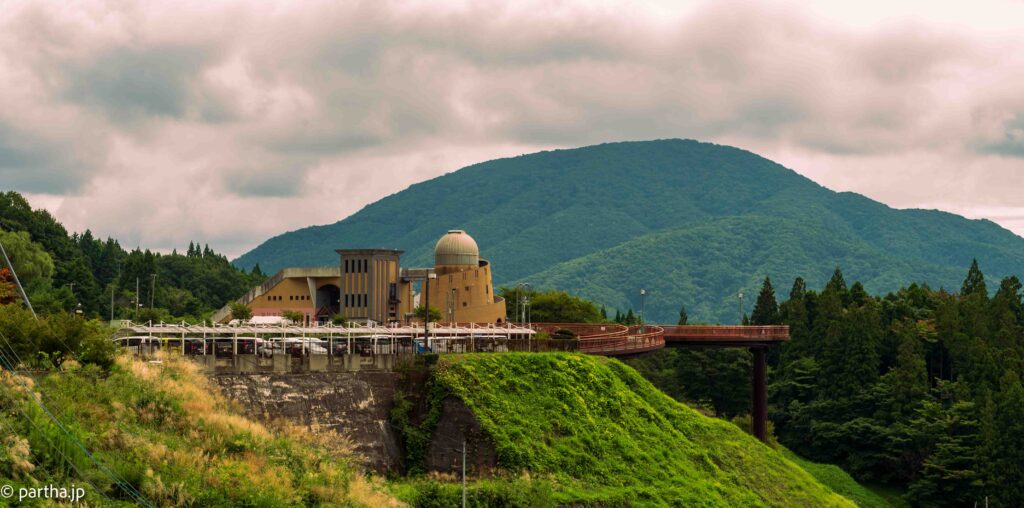
There is a cafe and restaurant called Kamayama Rest House located on the second floor of the complex next to the caves. The Mori Soba served there is vegetarian so we settled down to a meal.
The next destination on our list was Kasoudaki (嘉相滝). The falls located around 30 kilometres from the caves have a drop of 2 metres and are classified as the lowest waterfalls in Japan. There are walking trails around the falls an ideal spot for a short hike.
The falls are not well known even in and around Tamura city and our host had never heard of them. They showed up on Google Maps but did not have an English name added. So it took some effort to find out the exact pronunciation and once I did I made an edit on Google Maps with the English name, my very first Google Map edit!
My cellular signal in this remote part of Japan was patchy, the Car Navigation system couldn’t find the address , so a 40 minute drive to the location ended up taking more than an hour. We drove in the wrong direction, realised we had to turn back, entered into a Family Mart parking, turned back and finally found the correct road leading to the falls.
There is a park with a tongue twister for a name Tamuraseibukogyodanchihikarigaoka park(田村西部工業団地光ヶ丘公園)with a parking lot where we planned to park our car before walking the rest of teh way to the falls. A light drizzle accompanied our drive and turned into a heavier drizzle by the time we reached the park.
We waited in our car, watching a group of senior citizens at the park, an event organised to celebrate ‘Respect for the Aged’ day public holiday the following morning. A croquet game had been organised and was in the process of being abandoned in the downpour. We sat in our car and watched the group walk back slowly and then hurriedly as the downpour worsened.
They came back got into their respective cards, the organisers carrying equipment and dumping it into their cars and vans. They stopped, they spoke and again started moving, the iterations continuing till the last of the equipment, paperwork and bags were deposited inside vehicles. There was a harmony in the group, they did not look hassled at the abandonment and the need to rush back into shelters from the ever increasing rain.
As the last of the cars pulled out of the parking lot, we abandoned our own attempts at the waterfall. As we drove out the rain worsened, the downpour was heavy, visibility dropping suddenly in the fading light.
As we drove along the country roads the tires splashing through, the intensity of the downpour blinding the cameras, with the disorienting din of the rain pelting the car we lost our way. The car navigation system showed us a wrong path, even though we picked it up from the memory of the travel from the earlier day.
The cell-phone signals , patchy earlier surrendered to the elements and stopped working. So we drove blindly hoping to get into an area with signal and after a while succeeded. We overshot the farmhouse on the first attempt, getting into the service lane next to the Yodonosan shrine before turning back and finally entering the lane leading in.
Our host prepared a dinner fit for an army and we say in his living room, a shrine at the corner, possibly for the father and other traditional and quaint memorabilia.
The next morning, after a breakfast fit for another army, our host handed over tomatoes from the greenhouse in front of the house.
‘Enjoy them, they are delicious’ he said as we drove away.
We came to this remote part of Japan for a different experience , an escape from the shackles of an urban concrete. We found nature, we found calm in unrestrained breathing, the air crisp and scented with earthly undertones.
But we also found lonely shrinking towns and we found bonds to the past straining under the weight of abandonment.
But we also found hope, our host returning home after a few decades, carrying on and reviving all that would have been lost!!

